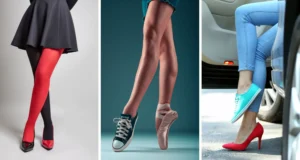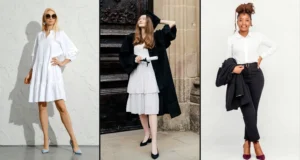The first ladies wore purple to the 2021 presidential inauguration primarily to represent unity and bipartisanship. Purple is a mix of the traditional Democratic blue and Republican red colors. The first ladies aimed to communicate togetherness by wearing purple ensembles. They wanted to convey that they were committed to working across party lines to heal divisions in the country.
The color purple also carries symbolic significance as the color of the women’s suffrage movement from over a century ago. The first ladies wearing purple paid homage to the women who fought for the rights women enjoy today, including the right to vote.
In short, by coordinating to wear shades of purple on Inauguration Day, first ladies Jill Biden, Hillary Clinton, Michelle Obama, and Laura Bush emphasized that political parties should not prevent people from coming together to move the nation forward. Their choice of the unifying color purple showed Americans what bipartisan cooperation could look like.
First ladies political women who have worn purple on significant occasions
Shirley Chisholm
Shirley Chisholm was not a first lady but the first Black woman elected to Congress. She famously wore purple during her historic presidential campaign in 1972. Chisholm chose purple as one of the colors of her campaign for multiple reasons.
Purple represents the combination of the Democratic blue and Republican red, signaling her independence from political parties. As the first Black woman to run for president, Chisholm wanted to show she answered to no one but herself.
Purple is also the color of royalty. Chisholm saw herself as a pioneer and wanted to challenge the idea of who could become president. She aimed to show that anyone, regardless of race or gender, could reach the highest office.
Furthermore, purple is associated with the women’s suffrage movement. As a strong supporter of women’s rights, Chisholm wore purple to honor the women who fought for suffrage. She sought to keep advancing equality for all women.
Chisholm frequently wore purple outfits on the campaign trail to help make her candidacy visible. The color quickly symbolized her efforts to achieve barrier-breaking representation in the presidency.
Kamala Harris similarly donned purple for her vice presidential inauguration, which likely paid homage to Chisholm as the first Black woman to run for national office. The color purple has thus become emblematic of Black women’s political pioneers.
Hillary Clinton
Hillary Clinton often wore the color purple for significant political events and occasions. There are multiple reasons for her choice of this color.
Clinton wore purple to represent unity and bipartisanship. Purple is a mix of the Democratic blue and Republican red, showing that Clinton aimed to reach across party lines.
Purple also signifies strength, power, and royalty. By donning purple pantsuits during debates and major speeches, Clinton projected an image of a strong, powerful woman leader who was fit to lead.
Purple is the historical color of the women’s suffrage movement. Clinton wore purple to pay homage to the pioneering women who fought for the right to vote. It conveyed that Clinton would continue fighting for equal rights for all women.
During the 2016 election, Clinton wore purple both for her acceptance speech at the Democratic National Convention and for the presidential debates. She donned purple again for her concession speech, signaling grace and dignity despite her defeat.
Most recently, Clinton coordinated with Michelle Obama and Kamala Harris by wearing purple to the 2021 inauguration. Their choice united them as prominent female political figures committed to unifying the country.
In summary, Hillary Clinton wore purple for meaningful political events to convey the messages of unity, bipartisanship, strength, and her enduring commitment to women’s empowerment and equality. The color purple aligns with Clinton’s mission to break barriers for women in politics and leadership.
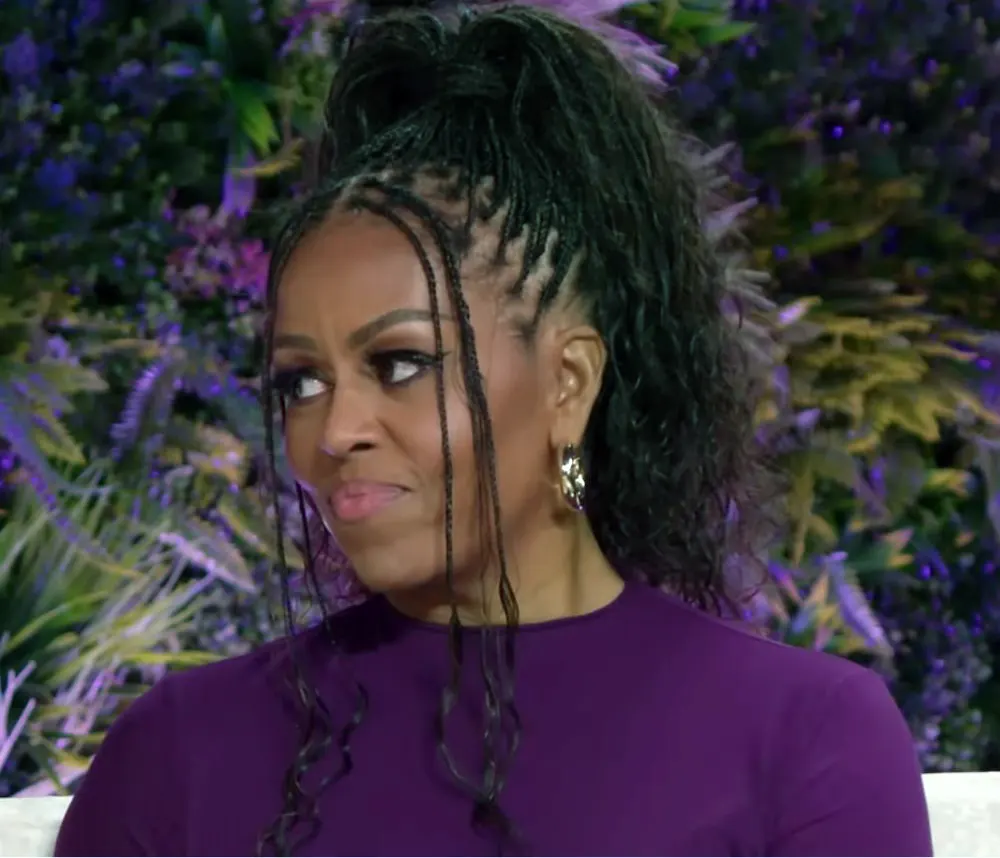
Michelle Obama
Michelle Obama wore shades of purple to several notable events during her time as First Lady, each choice communicating a specific message.
Obama donned a purple Jason Wu dress to Barack Obama’s 2009 inauguration as a nod to bipartisanship. Purple blends Republican red and Democratic blue, signaling Obama’s desire to unite Americans of all political stripes.
Obama also chose purple ensembles for major speeches, including at the 2012 and 2016 Democratic conventions. Wearing purple projected strength, authority, and leadership as the First Lady and as a prominent political figure in her own right.
Obama regularly wore purple to promote her “Let’s Move!” campaign for healthy eating and exercise in America’s youth. The color represented the diversity of the campaign’s goals and aimed to improve the lives of all children.
In January 2021, Obama coordinated with Kamala Harris and Hillary Clinton by wearing a purple Sergio Hudson outfit to Joe Biden’s inauguration. Their unified purple outfits demonstrated dignity and harmony as trailblazing women leaders committed to uniting all Americans.
Overall, Michelle Obama’s strategic use of purple showcased both her individuality as First Lady as well as her commitment to collective causes. By donning the color of royalty and the suffragists who paved her way, Obama communicated her belief in women’s leadership and diversity while instilling hope for the future.
Accordingly, on significant occasions, Michelle Obama’s choice of purple ensembles carried multifaceted meaning: she wore purple to represent bipartisanship, leadership, equality, solidarity, and renewal of spirit for the American people.
Laura Bush
Laura Bush regularly donned purple attire for historically notable events during her time as First Lady. Her choice of this color carried symbolic meaning.
Bush wore a purple Oscar de la Renta coat to George W. Bush’s 2001 inauguration, representing bipartisanship. Purple blends Republican red and Democrat blue, showcasing Bush’s desire for unity across party lines.
At the 2005 State of the Union Address and Women’s World Summit conferences, Bush wore purple ensembles by Oscar de la Renta. The color projected authority yet warmth, communicating Bush’s commitment to empowering women and girls worldwide.
Bush wore another purple Oscar de la Renta gown in 2008 to appear at the Democratic National Convention. Bush’s outfit emphasized unity and bipartisanship, supporting her husband’s electoral opponent.
Laura Bush’s frequent choice of purple reflected her values of collaboration and duty as First Lady. By channeling the purple palette of the suffragists before her, Bush communicated her dedication to advancing the rights and roles of women everywhere. For Bush, the color purple signifies solidarity, progress, and hope for the future.
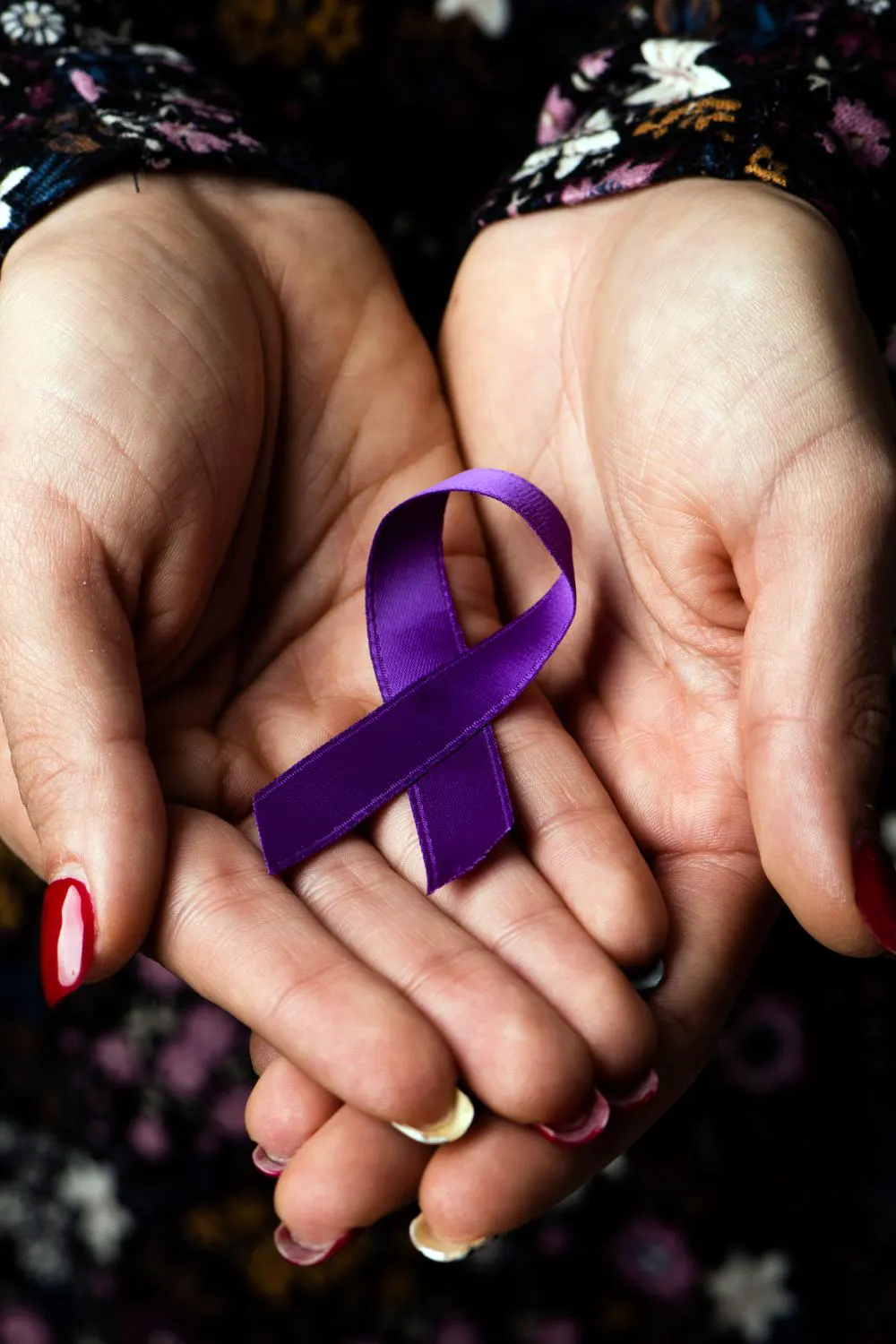
Jill Biden
Jill Biden has often worn the color purple for prominent events during her time as First Lady, sending notable messages through her fashion choices.
Biden wore a purple coat dress set by Brandon Maxwell for Joe Biden’s 2021 inauguration. The coordinated purple outfit represented unity and bipartisanship, blending Republican red and Democratic blue.
Biden donned another purple dress by Sally Lapointe for her first State of the Union Address in 2021. The royal color projected strength, confidence, and wisdom, benefitting her new First Lady role.
Biden champions literacy and education, often sporting purple ensembles when promoting initiatives like Let’s Read Across America Day. The color represents the diversity of American children that her programs aim to serve.
Biden also wears purple to raise awareness for International Women’s Day yearly. Purple signifies the global sisterhood of women and girls that Biden seeks to uplift by advocating for women’s rights and opportunities.
Additionally, Biden has repeatedly upcycled certain purple dresses, exhibiting environmental consciousness as First Lady. Wearing repurposed outfits shows Biden’s commitment to sustainability and substance over superficiality.
Jill Biden’s strategic use of purple aligns with her priorities as First Lady: championing education and women’s empowerment, promoting sustainability, fostering unity, and modeling grace and wisdom through words and actions. For Jill Biden, the color purple signifies substance, solidarity, and hope for progress.
Kamala Harris
Vice President Kamala Harris frequently wore the color purple to symbolize unity, bipartisanship, and solidarity with women on important occasions.
Harris donned a bright purple dress and coat by two Black designers for Joe Biden’s 2021 inauguration. The coordinated purple outfit represented bipartisanship by blending Republican red and Democrat blue.
Harris wore a purple blazer and top to President Biden’s first address to Congress in April 2021. The royal color complemented the bipartisan theme of the occasion and projected leadership.
For both events, some experts suggested Harris’s choice of purple paid homage to Shirley Chisholm, the first Black woman elected to Congress and first to run for president. Chisholm championed purple to symbolize her ambition to break barriers for Black women.
Harris often wears purple on International Women’s Day to signal unity with the global sisterhood of women that she seeks to uplift. The color represents the diversity of women whose rights and equity Harris strives to advance.
Vice President Kamala Harris strategically champions purple to convey the multifaceted messages important to her vice presidency: representing Black women in high office, forging unity across party lines, exhibiting leadership through grace and wisdom, and displaying solidarity with women worldwide. For Harris, the color purple signifies both her vision and her values.
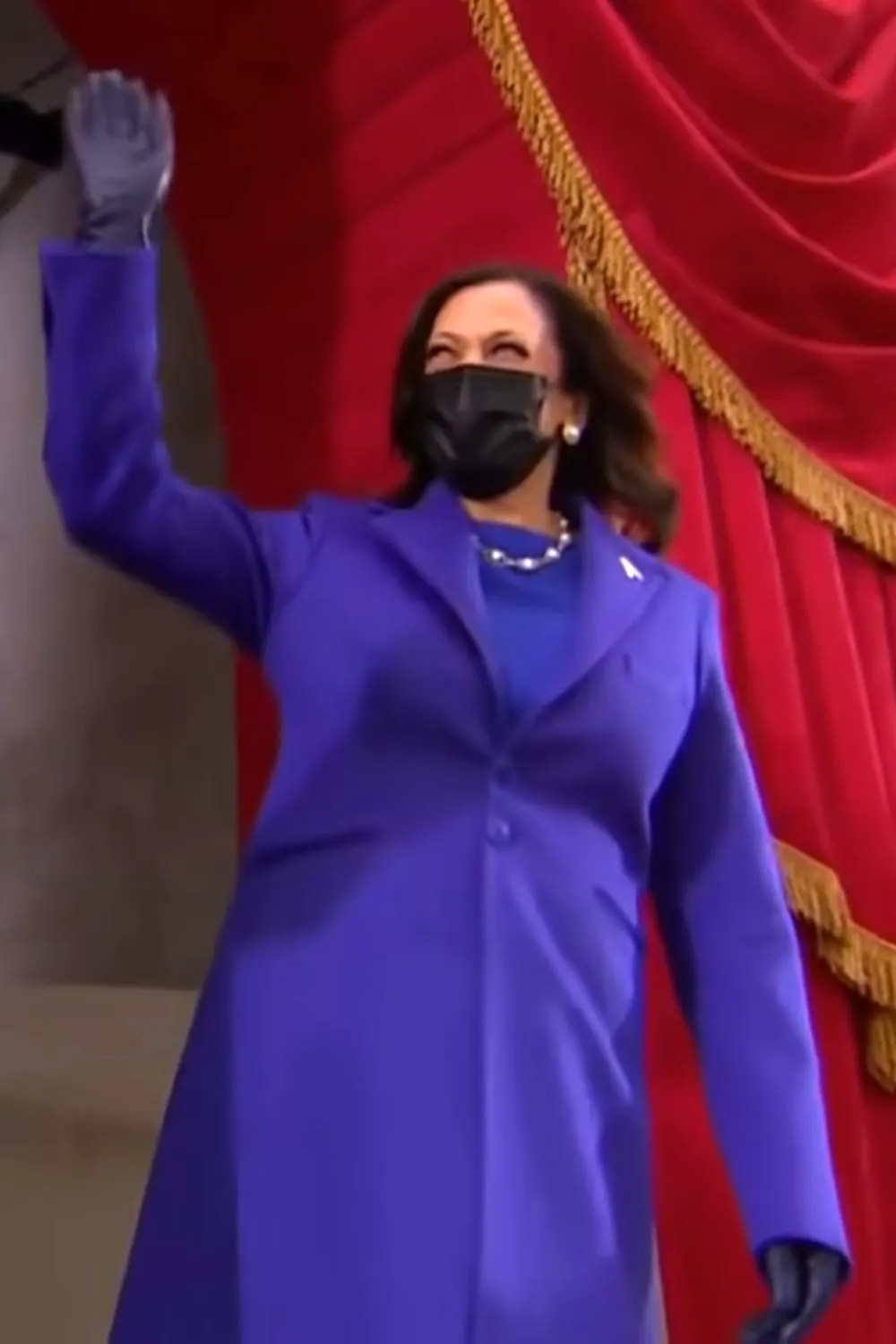
Summary
The first ladies wore shades of purple to the 2021 inauguration to symbolize unity, bipartisanship, and women’s empowerment. Purple blends the colors of the two major political parties, showing their commitment to collaboration despite divides. It also pays homage to the purple worn by suffragettes who paved the way for women’s achievements.
Other prominent female political figures like Shirley Chisholm and Hillary Clinton have used purple to break barriers. Chisholm boldly wore purple in her 1972 presidential run to assert her independence. Clinton’s purple pantsuits projected strength for events like debates and speeches.
Michelle Obama, Laura Bush, and Jill Biden continued the tradition as first ladies. Obama’s purple represented unity at inaugurations and authority as she championed causes like nutrition and exercise.
Bush’s purple ensembles conveyed bipartisanship and signaled her dedication to advancing women’s roles. Jill Biden wears purple to events promoting education, women’s rights, sustainability, and other priorities.
Kamala Harris carries the symbolic meaning of purple into her vice presidency. Her bold purple clothes on Inauguration Day and other occasions highlight leadership, honor pioneering women of color like Chisholm, and demonstrate solidarity with women and girls.
In short, purple allows prominent political women to broadcast messages of unity, power, hope, and their commitment to fighting for the equity of all Americans. It links today’s barrier-breaking female leaders to the suffragists who came before them.
FAQ
Why was Jill Biden wearing purple?
Jill Biden has been seen wearing purple on multiple occasions. She has sometimes mentioned wearing purple to signify unity, combining red and blue. For example, on the day of President Biden’s inauguration on January 20, 2021, Jill Biden wore purple with a purpose because she knew the theme that President Biden was striking was unity. The color purple has since become associated with unity. It is also possible that Jill Biden wore purple for other personal or symbolic reasons on different occasions.
Why does Queen Elizabeth wear purple?
Queen Elizabeth wears purple for several reasons. Firstly, purple symbolizes royalty, aligning with her position as the head of state of the UK, projecting power and authority. Secondly, given its historical significance as an expensive color, it upholds the tradition of associating purple with wealth and power. Lastly, it could be her personal preference, as purple is vibrant, eye-catching, and flattering on different skin tones.
What color is purple spiritually?
Spiritually, the color purple holds profound significance, often associated with the divine and higher realms. It symbolizes spirituality in various cultures, and its connection with the Virgin Mary in Christianity reinforces its sacred connotation. Furthermore, purple represents creativity and imagination due to its blend of red and blue, both linked to these qualities. Also, in the context of the women’s suffrage movement, purple signifies dignity and royalty, continuing to inspire various interpretations today.
What other colors have been used to represent women’s suffrage?
In addition to purple, the women’s suffrage movement used white and green as significant colors. White symbolized purity and virtue, reflecting the innocence and integrity of women. Green represented hope and new beginnings, signifying the potential and opportunities that voting rights would bring for women, chosen for its association with a promising future. These colors and purple formed the emblem of the National American Woman Suffrage Association (NAWSA) and became powerful symbols of the movement’s aspirations.
What does color purple mean in politics?
In politics, the color purple carries diverse meanings. It is associated with the women’s suffrage movement, representing women’s rights and the fight for suffrage. The civil rights movement also used purple to symbolize unity and solidarity among different groups. The LGBTQ+ community adopted purple for its representation of diversity and acceptance. In the political context, purple also signifies bipartisanship and unity, combining the red and blue colors associated with the Democratic and Republican parties. Furthermore, purple states or swing states play a crucial role in presidential elections due to their balanced support for both parties.


